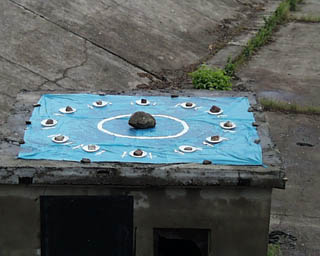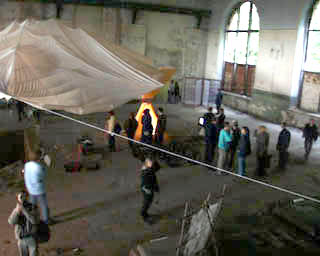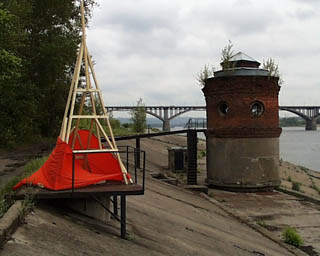The locale was not chosen at random: the city began its modern life here when in 1900 the Nizhny Novgorod branch line of the Moscow to Kazan railway was built. Modernity went then further into the trusses of the bridge, towers of elevators, boilers of thermal plants. Now everything is disused, desolate and deserted.
When artists work in an "exhausted" medium, they "recultivate" it in a peculiar way: they introduce the objects of the medium back into culture, but in other, sometimes paradoxical, connotations. By that, it is only natural that the theme of Time, of the receding century, of the Millenium frontier, comes into life, and we turn to the image of the city as a technogenic and cultural test site.



In terms of land art the most interesting objects and structures are bankseats of the bridge, the former water supply plant with its pump tower at the very shoreline, old bodies of trucks, collectors of rainwater sewage, anti-slide structures on the hill, navigation marks, and ruins of the railway that existed here in since 1900 till the 1950s.
Evgeny Strelkov, Floodplain of Time catalogue. [Ed. E. Strelkov pub Dirigible Publishing House]
